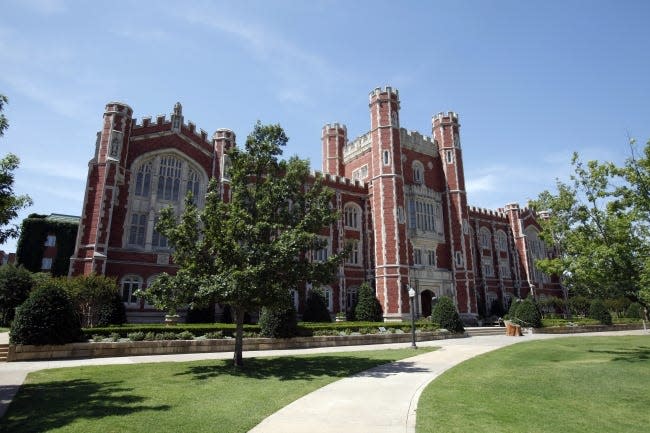OU regent responds to critical Wall Street Journal report

I read with interest Thursday’s article in The Wall Street Journal about flagship universities and, particularly, the University of Oklahoma. While the authors made some important points regarding the state of higher education, they missed some significant ones about OU.
More: Wall Street Journal names OU as one of many schools that kept spending amid rising tuition
When I joined the OU Board of Regents in 2018, it was clear there were unsustainable inefficiencies in the way it was operating. Then-Gov. Mary Fallin directed our regents to be highly involved and to make the institution rigorously accountable. We held tuitions flat while we implemented difficult cutbacks. The goal was to trim the budget and provide greater value to students while continuing to offer a superior educational experience. We’ve worked aggressively to accomplish that, including selecting a president in Joe Harroz who is well-grounded in the the fiscal realities of higher education and committed to moving the university forward.
Today, OU is healthier and stronger than ever. It has had record-breaking freshman classes for three years in a row with the most academically qualified, diverse and first-generation students in school history. Equally important, it now costs an Oklahoma resident 6% less in annual net tuition and fees than it did five years ago, and the number of students graduating from OU with debt is 13 percentage points below the national average.
The university has done all this while cutting about $140 million annually from the operating budget over the past five years.
OU has also applied changes to meet key workforce demands. It recognized the sizeable nursing shortage in our state and responded by expanding its program and increasing the number of graduates by 53% from 2021. In the past two years, OU also has substantially expanded student enrollment in such essential areas as aviation and engineering.
Along with conscientious budget cuts, OU has continued to have notable recognition across the system: U.S. News awarded OU Law its highest ranking ever ― No. 24 among public law schools ― while it still made the top 25 list of best-value law schools (National Jurist Prelaw Magazine). In addition, several other programs rate among leaders, including No. 1 for both aviation (Flying Magazine) and meteorology (OutstandingColleges.com), No. 2 for journalism (Broadcast Education Association), and No. 9 for online bachelor’s degree programs for veterans (U.S. News & World Report).
On the athletics side, we initiated a move to the Southeastern Conference (SEC), which will put the school on a prominent national stage to compete for national championships. We expect larger audiences, higher revenues, advantageous game-time slots, strong recruitment and even broader national awareness, while continuing as one of the few schools whose athletics programs are not underwritten by students or taxpayers.
Gov. Kevin Stitt and his predecessor, Gov. Fallin, expect OU’s leadership to be ever-vigilant with costs while remaining true to our responsibility to provide students with the faculty, resources, training and experiences to empower them for a lifetime. That is both a privilege and our obligation.

Natalie Shirley serves as chair of the University of Oklahoma Board of Regents.
This article originally appeared on Oklahoman: OU regent says critical Wall Street Journal report missed some points

